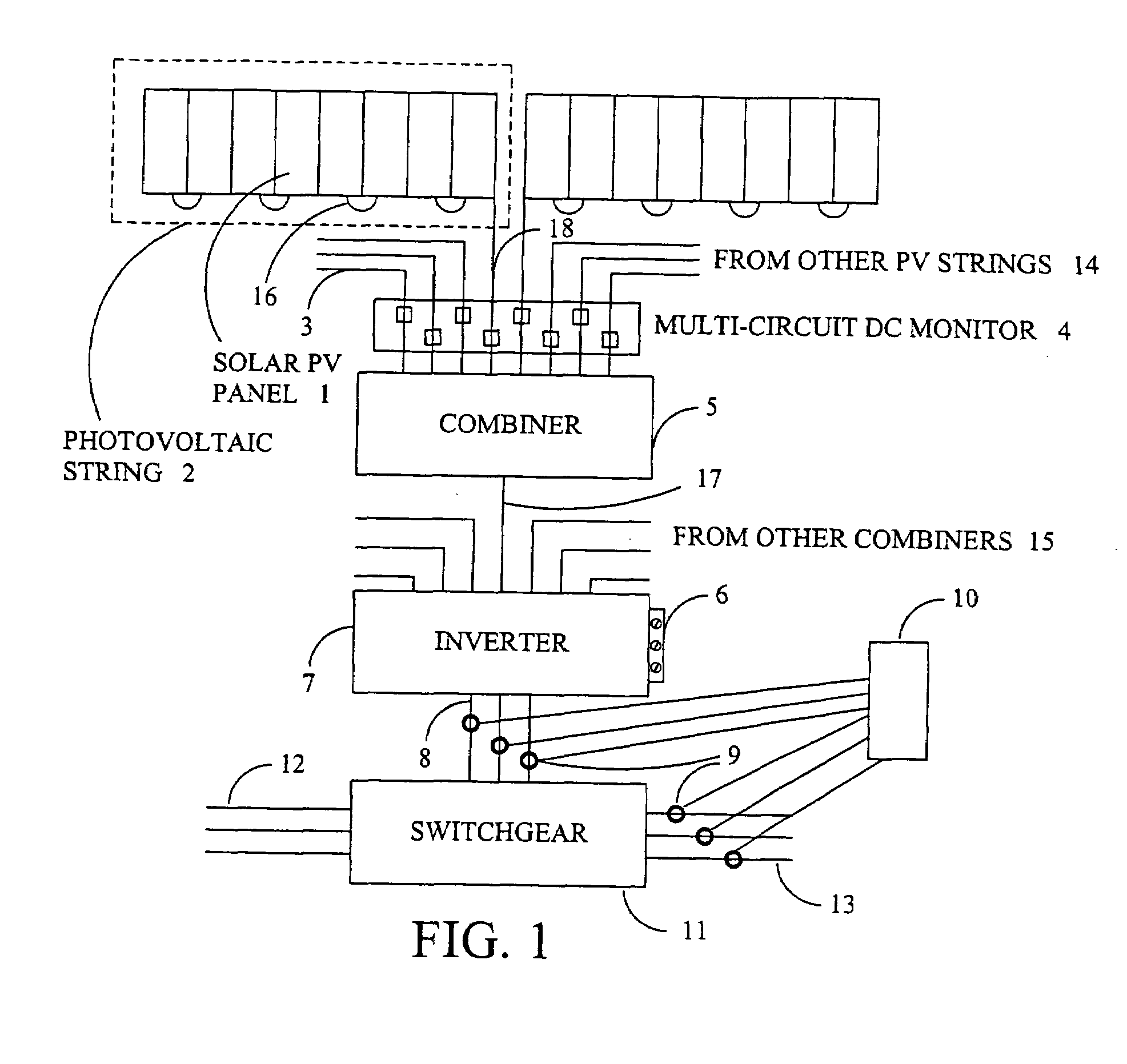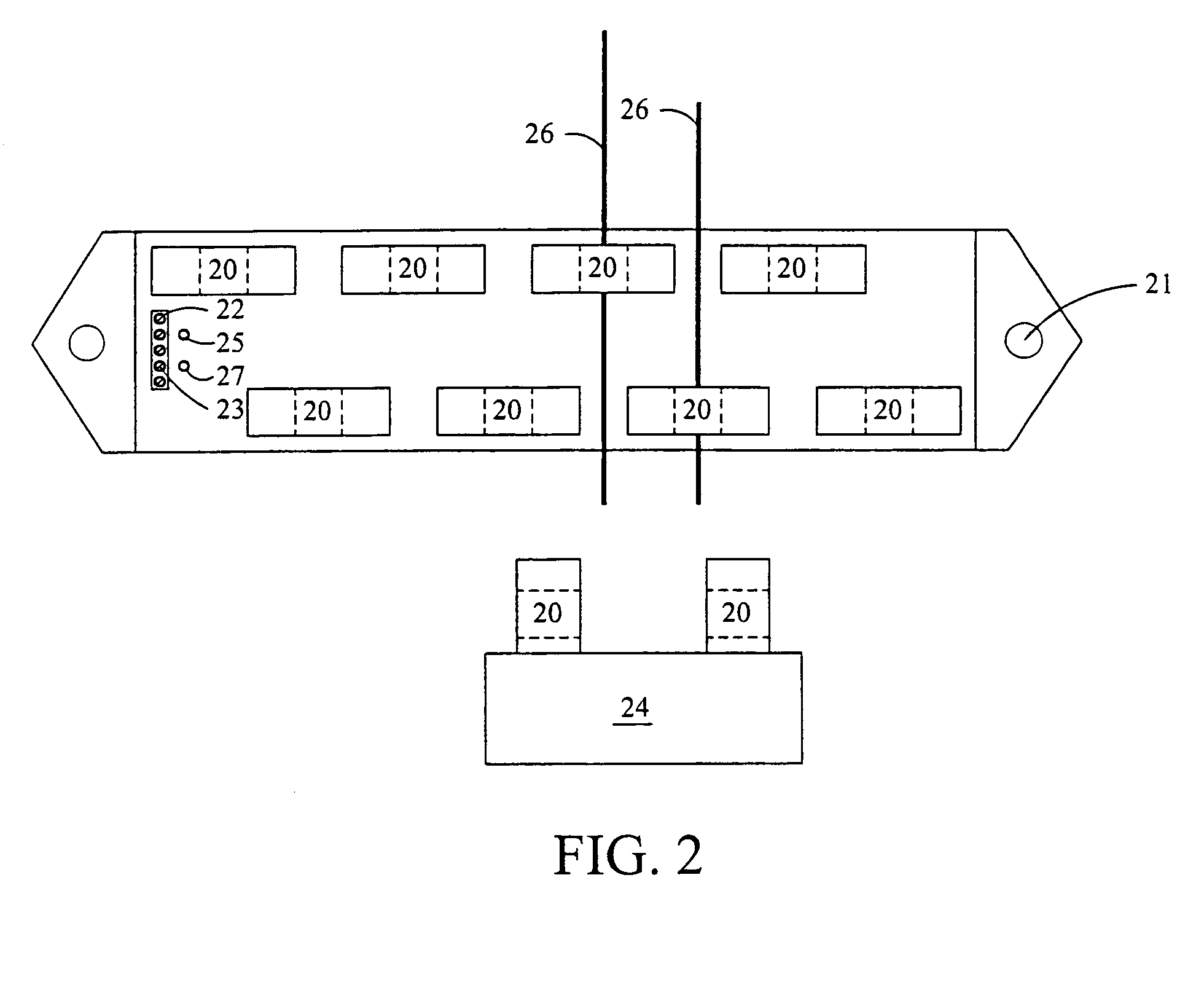Multi-circuit direct current monitor with Modbus serial output
a direct current monitor and multi-circuit technology, applied in the direction of instruments, pv power plants, sustainable buildings, etc., can solve the problems of not being able to provide additional information regarding any of the components of the overall solar system, affecting the output of the panel, and providing little if any useful information about the operation of the strings or arrays of the solar system
- Summary
- Abstract
- Description
- Claims
- Application Information
AI Technical Summary
Problems solved by technology
Method used
Image
Examples
Embodiment Construction
[0015]Many commercial and institutional building owners are installing solar photovoltaic systems to reduce their operating costs by generating electricity when sufficient solar energy is available and, in some cases, to sell power back to the utility when there is excess power available from the solar system. In addition to the potential savings and income generated from the solar system, there are significant incentives available from the utilities and from local, state and federal government entities. Most of these installations are performed by contractors who specialize in solar projects, and these contractors may or may not provide guarantees of performance to the owners or may share in the savings generated. Regardless of who benefits from the installation of the solar generating system, the only way to increase the return on investment (and recover the incentives) is to provide monitoring of operational parameters, both for the system as a whole and its component parts. If t...
PUM
 Login to View More
Login to View More Abstract
Description
Claims
Application Information
 Login to View More
Login to View More - R&D
- Intellectual Property
- Life Sciences
- Materials
- Tech Scout
- Unparalleled Data Quality
- Higher Quality Content
- 60% Fewer Hallucinations
Browse by: Latest US Patents, China's latest patents, Technical Efficacy Thesaurus, Application Domain, Technology Topic, Popular Technical Reports.
© 2025 PatSnap. All rights reserved.Legal|Privacy policy|Modern Slavery Act Transparency Statement|Sitemap|About US| Contact US: help@patsnap.com



